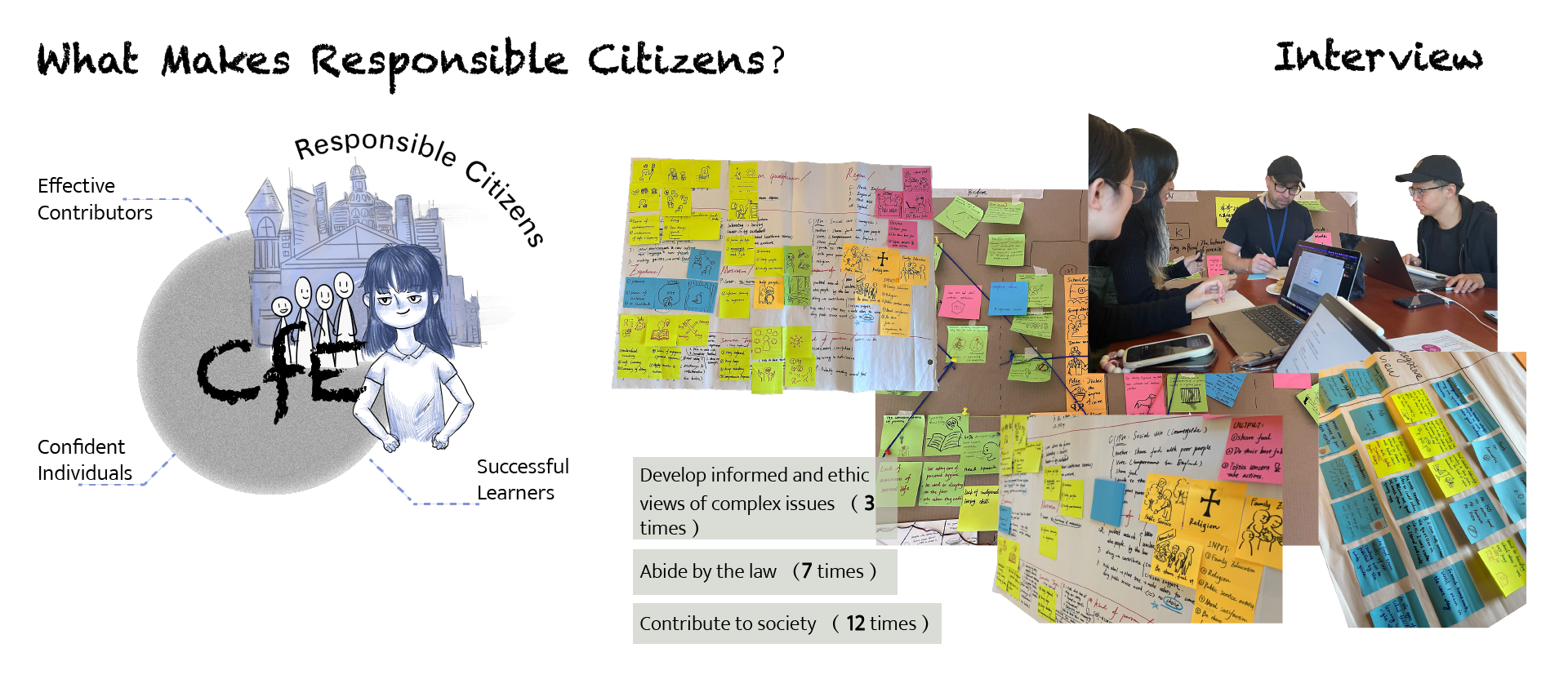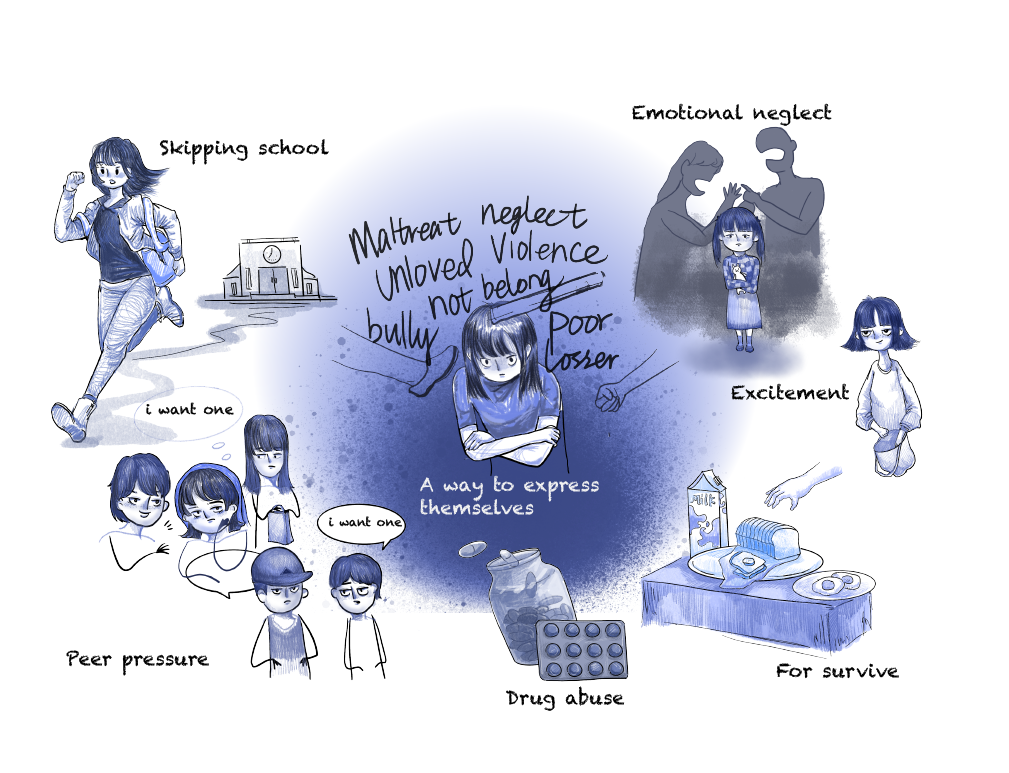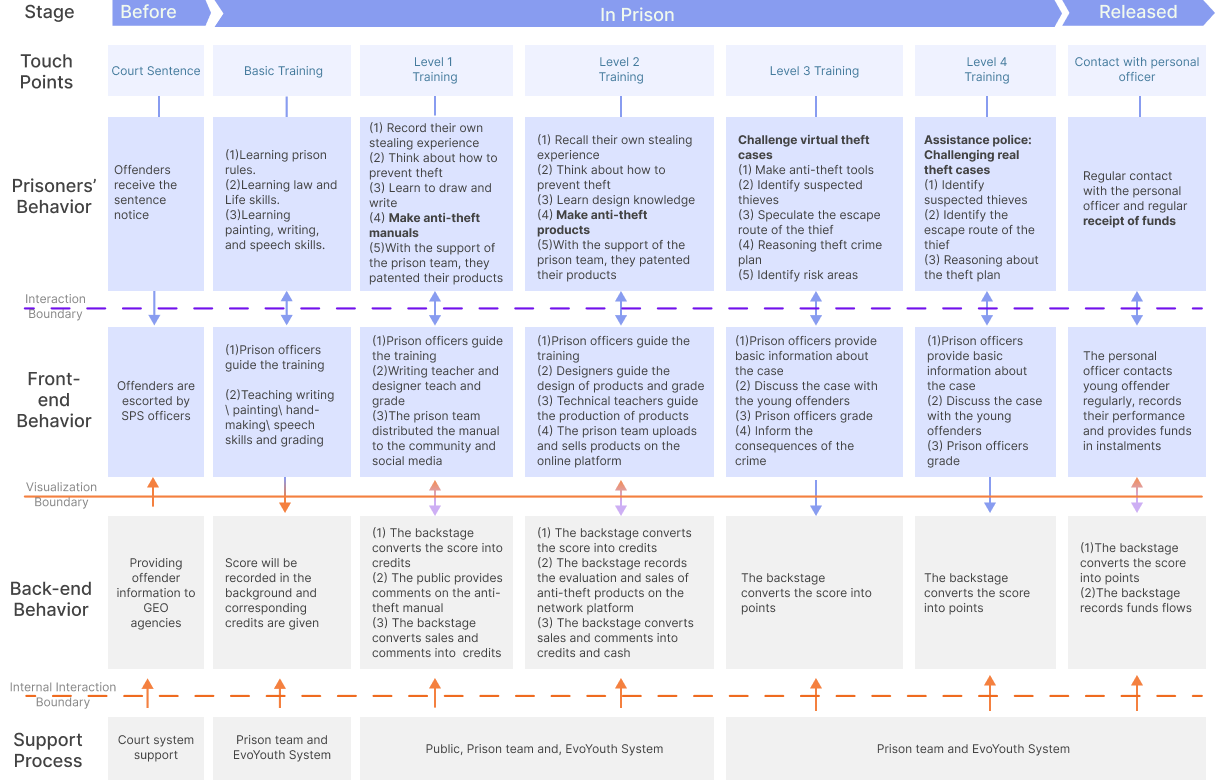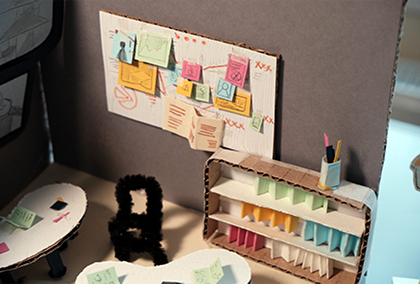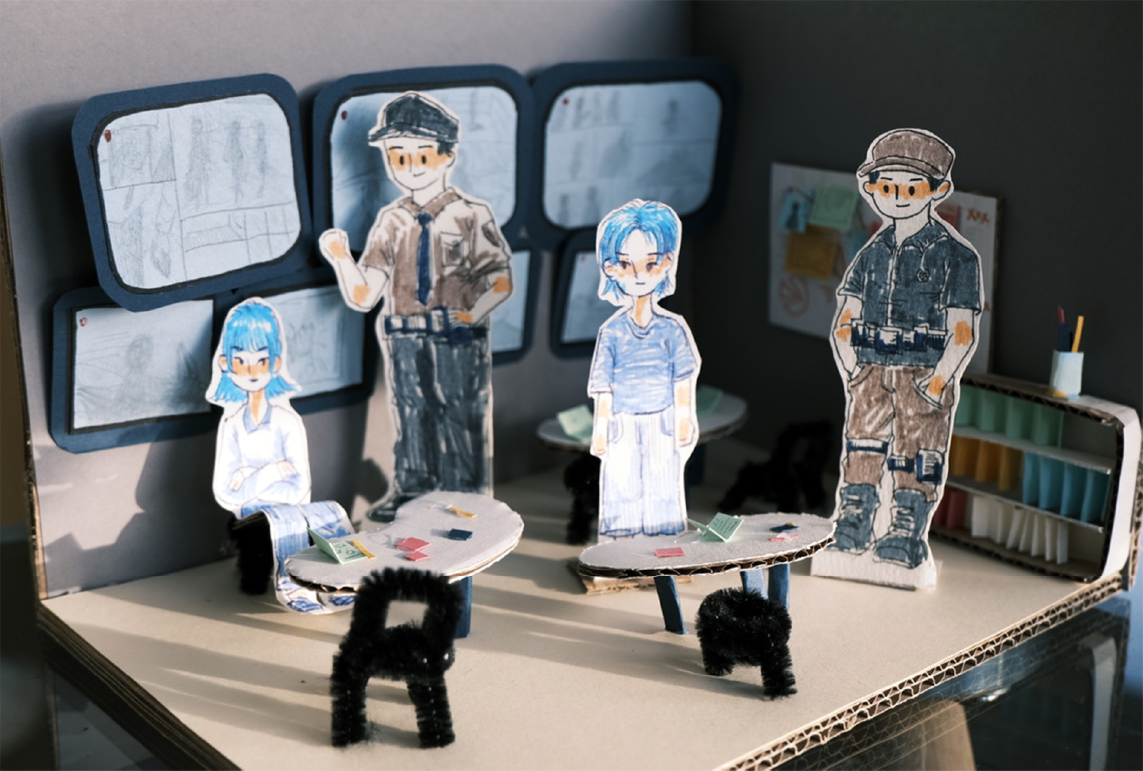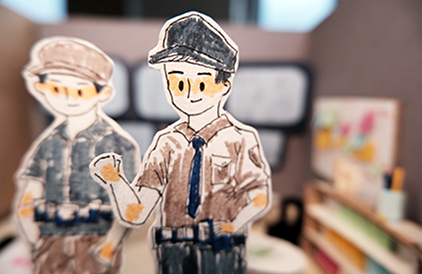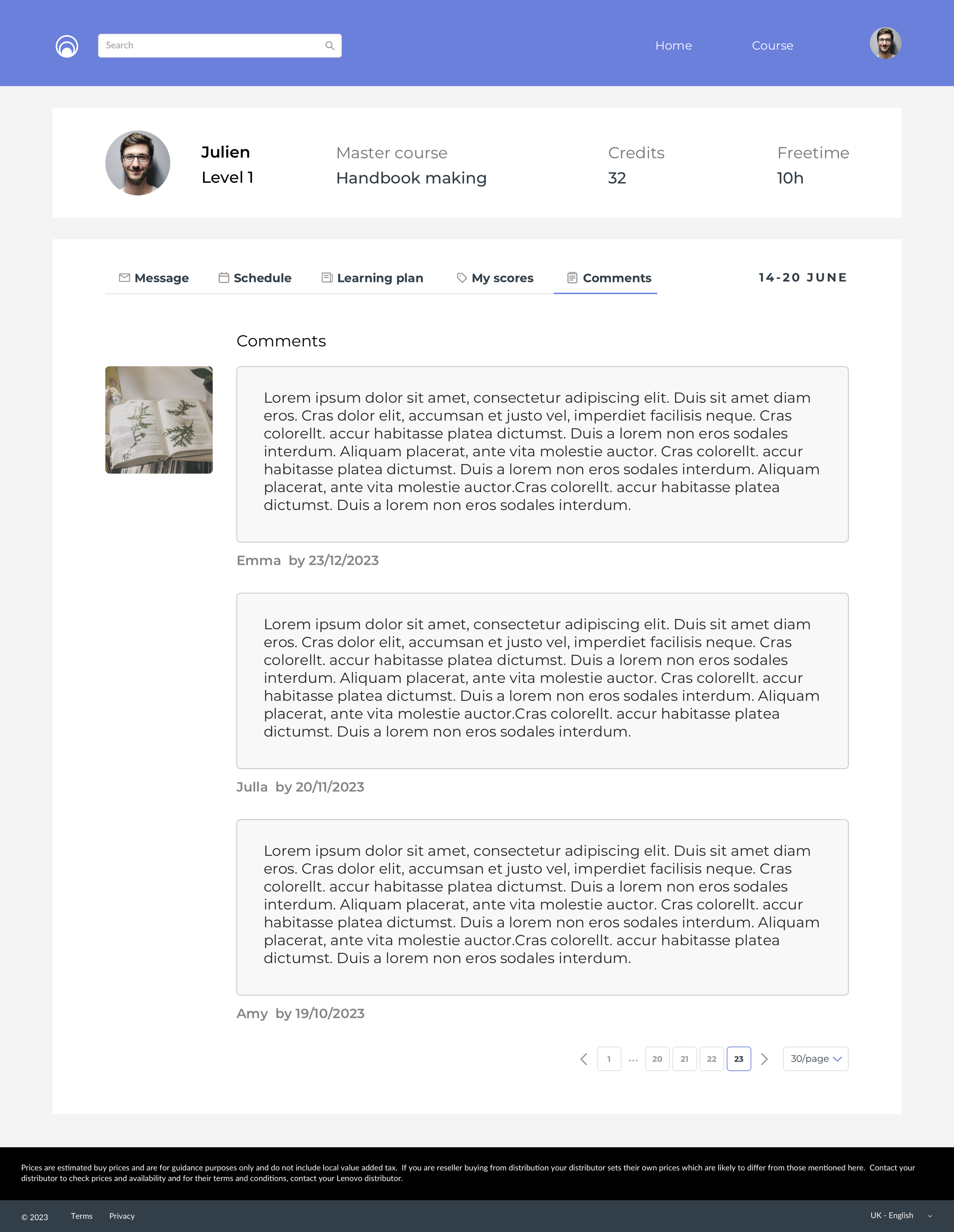Evo Youth
12–01–2024
This is a service system to help young offenders become responsible citizens.
group project
My work: Researcher, Illustrator, video editing, artefact production.
service system & website
Video
As an educational institution questions of how we learn and the contribution of teaching is fundamental to our critical thinking. We all have our own lived experience of learning in diverse formal and informal contexts. Our education is as much a question of how we learn as of what we learn. At the same time, the practices of educational institutions are constantly politicised in the wider interests of economic and political power. Our primary aim in this project is to explore and provoke thinking about the nature of learning, teaching and education through the design of an educational experience, focusing on aims derived from the local context of formal education
Project Brief:
The Scottish Curriculum for Excellence (CfE) was first proposed in 2004 and gradually introduced to Scottish Schools after 2010. As a general ‘purpose’ for education, the CfE established what are referred to as the Four Capacities; key capacities for State School education to embed in the abilities of children. These consist of four broad purposes:
Project background:
Successful Learners
Confident Individuals
Desk research
DeskResearch. Semi-structured interviews.Thematic analysis.
Research Approach
Effective contributors
Responsible Citizens
This project is focus on the responsible citizens
We used desk research to study the responsible citizenship component of the CFE, listing the outline of the interviews
Our team use thematic analysis, we coded and categorized the information provided by each interviewee to summarize the high-frequency codes, of which making a positive contribution to society was mentioned the most, twelve times in total, followed by obeying the law, thus we summarized the two traits that need to be possessed in order to be a responsible citizen, making a positive contribution to society and obeying the law.
Conclusion of the interview
User establishment
User research
By comparing the research data and the crime with the highest number of young offenders, Narrowing down the range of users, our team choose the theft offenders to be our user.
Needs of User
Our team chose young offenders as our users because they do not possess the two attributes of responsible citizenship summarized in our interviews, and we hope to help young offenders learn to abide by the law and make a positive contribution to society through the design of our service system.
Base on that we started the research about the types of crimes, we found that the number of robbery crimes is higher than other crimes
-
There are multiple risk factors that influence youth to commit theft, including traumatic experiences, violent behavior, emotional neglect, truancy, disregard for rules, and the need to survive, as well as the fact that youth offenders have a strong desire to express themselves, and therefore criminal behavior may be a manifestation of the youth offender's internal painful trauma, and the results of punishing delinquent youth for their painful behaviors by simply excluding them from society through incarceration will not change the status.
Household goods are the things most often needed by young offenders
Ability of User
-
We use the how might we methodology to analyze, the most important insight is: Based on our research, we understand that young offenders have a wide range of abilities, and the focus is on transforming their ability to commit crime into the ability to contribute to society.
We hope that with the support and assistance of our service system, young offenders will gain a sense of fulfillment through their contributions, which will motivate them to take the initiative to make positive contributions, obey the law, and become responsible citizens.
Idea outline
We refer to the motivation model in Vroom's VIE theory, (expectation theory of motivation), to design our service system to motivate young offenders . We have set up Assessment System, Fair Comparison System and Reward System in our educational programs. This will give them a sense of achievement in contributing to society. A timely feedback mechanism encourages young offenders to take the initiative to make contributions, and makes them realize that they are not abandoned by society and that there is more to be done with their abilities, but that they are just using them in the wrong direction.
Stakeholder map
-
Each young offender is assigned a personal officer who is aware of the young offender's needs and situation and supports them throughout their detention.
-
Police will share their theft experiences with delinquent youths, conduct simulated crime solving, and ultimately educate the public about the law.
-
Throughout the detention period Lead professional develops individualized rehabilitation and learning plans and deploys resources based on the delinquent youth.
-
The court ruled that young offender, as well as the designated agency, docking.
-
Basic training stage. Writing, drawing and crafts teachers will teach them the corresponding skills.
-
GEOAmey is responsible for escorting and handing over delinquent juveniles to sps workers.
-
The anti-crime manuals are sold and publicized on social media, so that the general public can learn about the group of young offenders, their experiences and ways of committing crimes, and to a certain extent, popularize the skills on how to prevent financial theft, and reduce the society's discrimination against the return of young offenders to the society.
-
Consumers purchase the anti-theft manual to learn how to prevent theft, while consumers review the manual and the product, giving young offender advice, positive feedback and encouragement.
-
Young offenders learn to create anti-crime manuals and anti-crime products, participate in simulated case solving and real cases, assist the police, and help victims recover their belongings.
Anti-theft manuals and products sold earn young offender points and bonuses that can be redeemed and freetime.
-
Government and prisons gain prestige
Service Blueprint
-
Our service system consists of three stages, focusing primarily on stage II Design in Prison. We have designed a four-phase learning curriculum and objectives, firstly, through learning art to help delinquent youth heal emotionally, self-awareness and self-exploration, and to promote expressive skills, and secondly, learning to design, because art is for the self, and design is for the other, and in the process of designing a product delinquent youth need to think in a different perspective, put themselves in the shoes of the person who has been robbed, and to cultivate the ability of empathy and communication and cooperation.
Points & rules
The young offenders receive rewards and timely feedback through these programs. The feedback system builds a bridge between young offenders and society, and through delinquent youths telling their own stories, the aim is to reduce discrimination against delinquent youths after their release from prison and to help delinquent youths reintegrate into society.
Service workflow
Prototype
Website
Information Architecture
Website
The website includes a platform for consumers to purchase products, a platform for delinquent youth to view their points, a log-in port for prison administrators, and a log-in port for teachers, where consumers can browse delinquent youth-designed products and anticrime brochures online, and leave feedback after receiving a product, and delinquent youth can view reviews from a points kiosk in the prison.
Student page
This page show specific lesson, the three tab show course introduction, course schedule and course criteria system.
The information details page of teenagers, from which they can see the evaluation of their products by social personnel, so as to gain confidence.
The Youth Personal Center page displays basic information about the youth, such as their level, remaining points, course schedule, study plan, scores, etc.
Teacher page
The teacher reviews the current selection of products and marks them according to the grading criteria.
This is the teacher's online page, it shows a list of products made by thieving teenagers.





